Piriformis syndrome is a condition characterized by the compression or irritation of the piriformis muscle, resulting in pain, tingling, and limited mobility. Finding immediate relief is crucial for managing discomfort and improving overall mobility.
What is Piriformis Syndrome?
The piriformis muscle is a small muscle located in the buttocks that plays a role in hip movement and stability. Several factors can contribute to the development of piriformis syndrome, including overuse, trauma, muscle imbalances, and anatomical variations. The most common piriformis muscle syndrome symptoms experienced by individuals include pain in the buttocks or hip area, radiating pain down the leg, and difficulty sitting or walking.
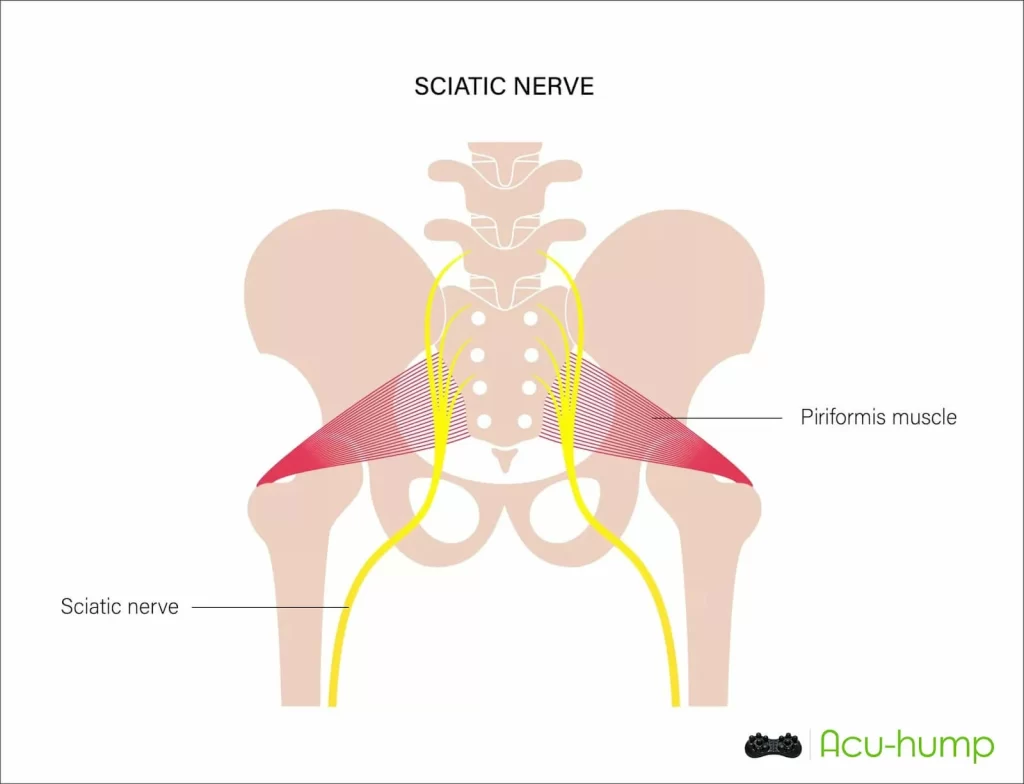
Acu-hump® Relieve Piriformis Pain
Self-Massage Techniques for Pain Management
Acu-hump Massage
The Acu-hump is an effective tool for providing immediate relief from piriformis syndrome. By applying pressure to the affected area, the Acu-hump can help release tension and alleviate pain. To perform the massage, place the Acu-hump against the piriformis muscle and apply gentle pressure, gradually increasing intensity.
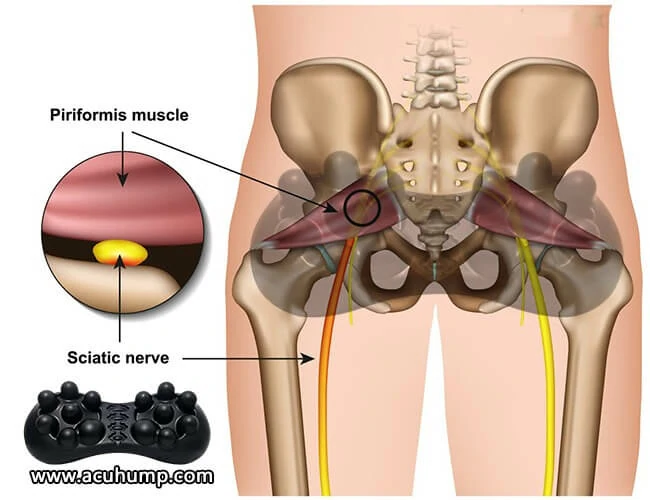
Acu-hump® Relieve Piriformis Pain
Be cautious not to apply excessive pressure that may cause further discomfort or injury.
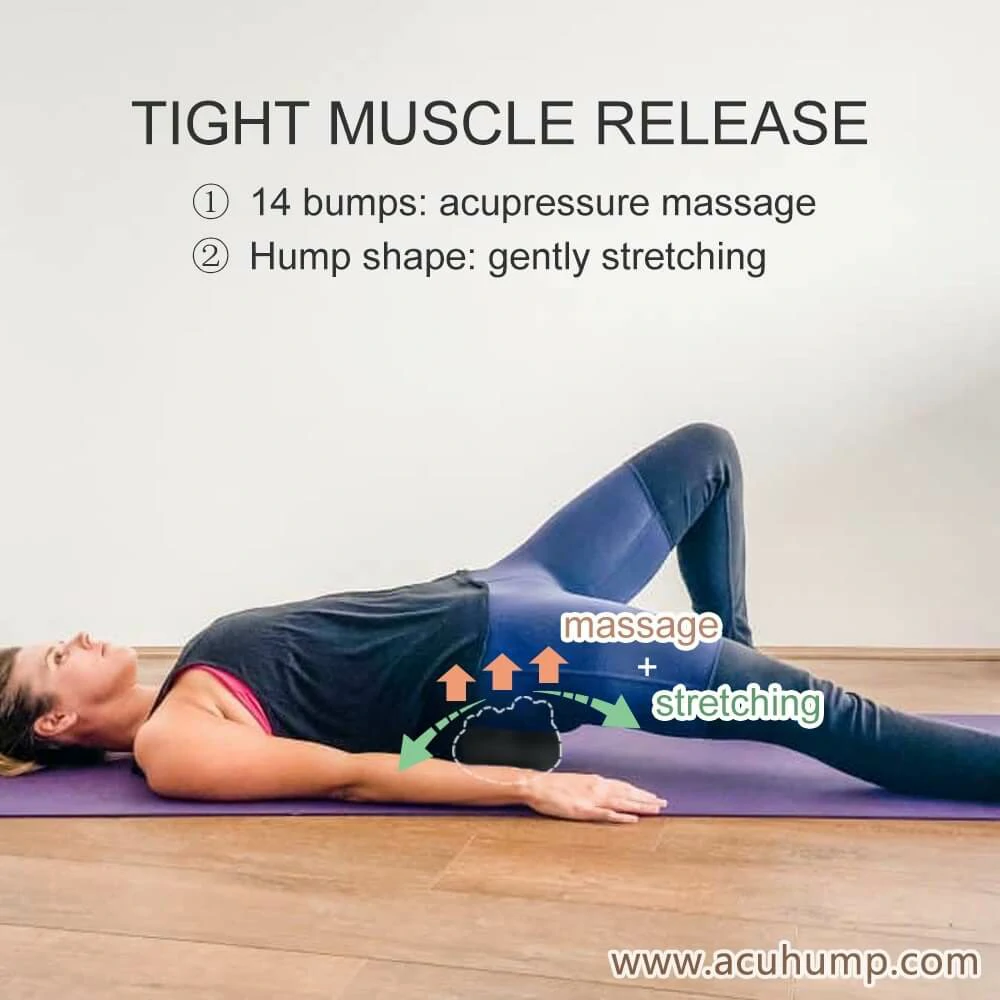
Acu-hump: 30-day return policy. No risk for you.
Stretching Exercises for Immediate Relief
Stretching exercises play a crucial role in providing immediate relief for individuals with piriformis syndrome. By targeting the piriformis muscle, these exercises help alleviate pain and prevent the recurrence of this condition. Incorporating these exercises into a daily routine, performed twice a day, can significantly reduce discomfort and enhance overall well-being.
Acu-hump Comprehensive Stretching Routine for Piriformis Syndrome:
To effectively relieve piriformis pain and prevent its recurrence, a comprehensive stretching routine that includes the use of an Acu-hump is recommended. This routine should be performed twice a day, with each stretch held for at least 30 seconds. Consistency and proper technique are key to achieving optimal results.
1# Step: Using the Acu-hump for Muscle Relief in the Lower Back
The Acu-hump proves to be an invaluable tool in alleviating muscle tension, particularly targeting the Quadratus Lumborum (QL) muscles in the lower back. To effectively use the Acu-hump, position it underneath the lower back area, ensuring that the taller side is positioned near the head and aligned with the QL muscles. Lie down on top of the Acu-hump with your legs extended, allowing it to penetrate any tight or knotted muscle tissue.
As the Acu-hump applies pressure to these specific areas, it is common to experience a certain level of discomfort. This sensation indicates that the tool is effectively releasing tension in the targeted regions. It is important to listen to your body’s responses during the process and adjust the amount of pressure applied as necessary. Gradually increasing the duration and frequency of using the Acu-hump allows your body to adapt to the therapy.

Acu-hump: 30-day return policy. No risk for you.
It is worth noting that the intensity of the sensation might be stronger in muscles that are tightly bound. However, with consistent use and regular adjustments, the Acu-hump can contribute to releasing muscle tension and promoting overall relaxation in the QL muscles and the lower back region.
Incorporating the Acu-hump into your self-care routine can be a beneficial addition to your overall muscle relief practice. Remember to consult with a healthcare professional if you experience persistent pain or discomfort in the lower back region. Take control of your muscle tension by utilizing the Acu-hump and experience the benefits of targeted relief in your lower back area.
2# Step: Using the Acu-hump for Lumber Spinal
The Acu-hump massage stretcher is a versatile tool that can provide effective relief for various types of lower back pain, including conditions like bulging disc, herniated disc, sciatica pain, and Cauda Equina Syndrome. Incorporating this tool into your routine can help alleviate discomfort and promote overall well-being. To effectively use the Acu-hump, follow these simple steps:
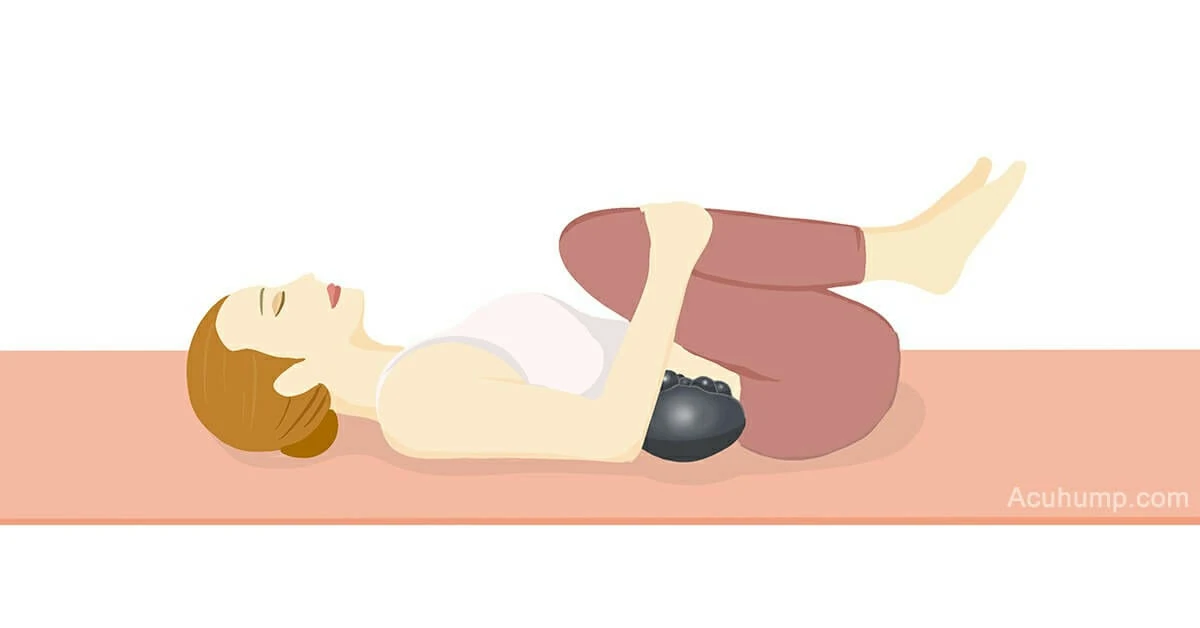
Acu-hump® Relieve Piriformis Pain
Step 1: Find a firm surface, such as the floor, and lie flat on your back. Ensuring a hard surface will allow for the necessary pressure to engage the muscles and maximize the benefits of the Acu-hump.
Step 2: Place the Acu-hump massage stretcher under your spine, making sure that the higher side is positioned close to your head and aligned with the specific area of your lower back that is affected by pain or discomfort. This proper placement will target the specific region and provide targeted relief.
Step 3: Hug your legs to your chest, holding this position for approximately 30 seconds. This gentle motion stretches and relieves tension in the muscles of your lower back, effectively reducing pain and discomfort.
Step 4: Release your hands and slowly straighten your legs, maintaining this position for another 30 seconds. By doing so, you continue to stretch the muscles in your lower back while also promoting increased blood circulation to the area.
Step 5: Repeat steps 3 and 4 as desired or as recommended by your healthcare professional to achieve optimal results. Regular and consistent use of the Acu-hump can help alleviate lower back pain and promote overall comfort and well-being.
Acu-hump: 30-day return policy. No risk for you.
3# Step: Using the Acu-hump for Sacroiliac Joint Dysfunction and Pubic Symphysis Pain Relief
The Acu-hump massage stretcher is a valuable tool for addressing pain associated with Sacroiliac Joint Dysfunction and Pubic Symphysis issues. By following these simple steps, you can effectively utilize the Acu-hump for targeted relief:
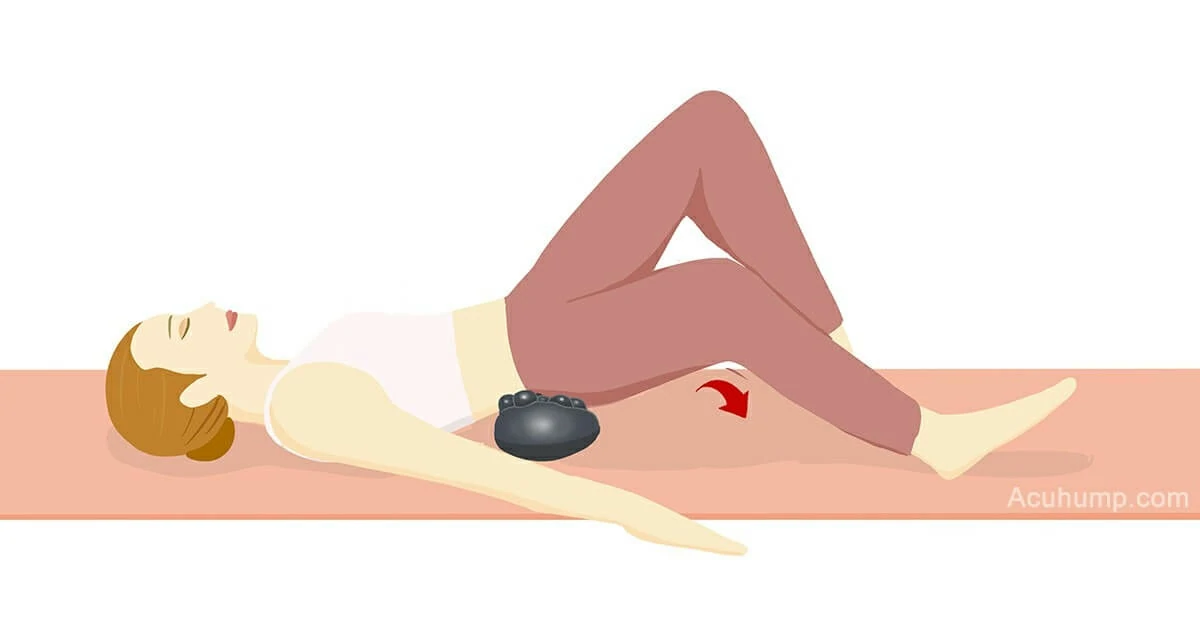
Acu-hump: Full refund policy. No risk for you.
Step 1: Lie flat on a firm surface, such as the floor, to ensure that sufficient pressure is applied to the target area.
Step 2: Position the Acu-hump massage stretcher under your SI joints, making sure that the higher side is near your head and accurately aligned with the affected area.
Step 3: Bend your legs and maintain a slight distance between your knees that is slightly wider than your shoulders.
Step 4: Steadily hold your left leg while gradually swinging your right leg towards the ground. Maintain this position for approximately 15 seconds before returning your right leg to its initial position.
Step 5: Repeat step 4, but with your left leg this time. Remember to hold the leg near the ground for approximately 15 seconds.
By consistently repeating these steps, you can effectively address pain associated with Sacroiliac Joint Dysfunction and Pubic Symphysis issues. However, it is always important to listen to your body and adjust the pressure and duration according to your comfort level.
Acu-hump: 30-day return policy. No risk for you.
4# Step: Stretch Psoas and Hip Flexor
To begin, start by lying on your back with your knees bent and your feet a few inches away from your buttocks. Lift your hips into a low bridge position and place the Acu-hump horizontally, on its medium setting, under your sacrum.
With your left foot planted firmly on the ground, bring your right knee towards your chest. While taking three deep breaths, gently push your right knee away from your body and use one or both hands to support your right thigh.
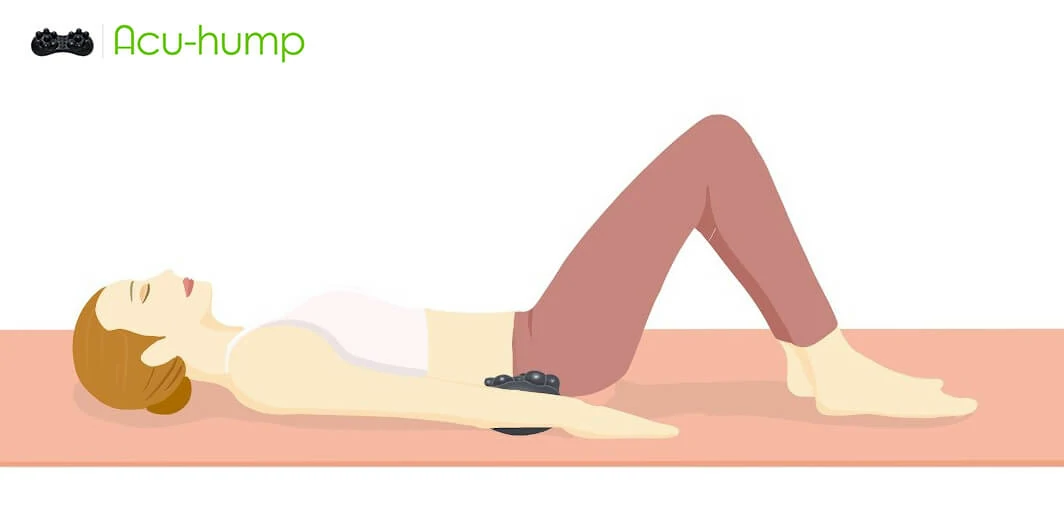
Slowly straighten your right leg, extending it out in front of you, and lightly press down on the thigh with your right hand. Allow your leg to relax, letting the right thigh gradually lower towards the ground.
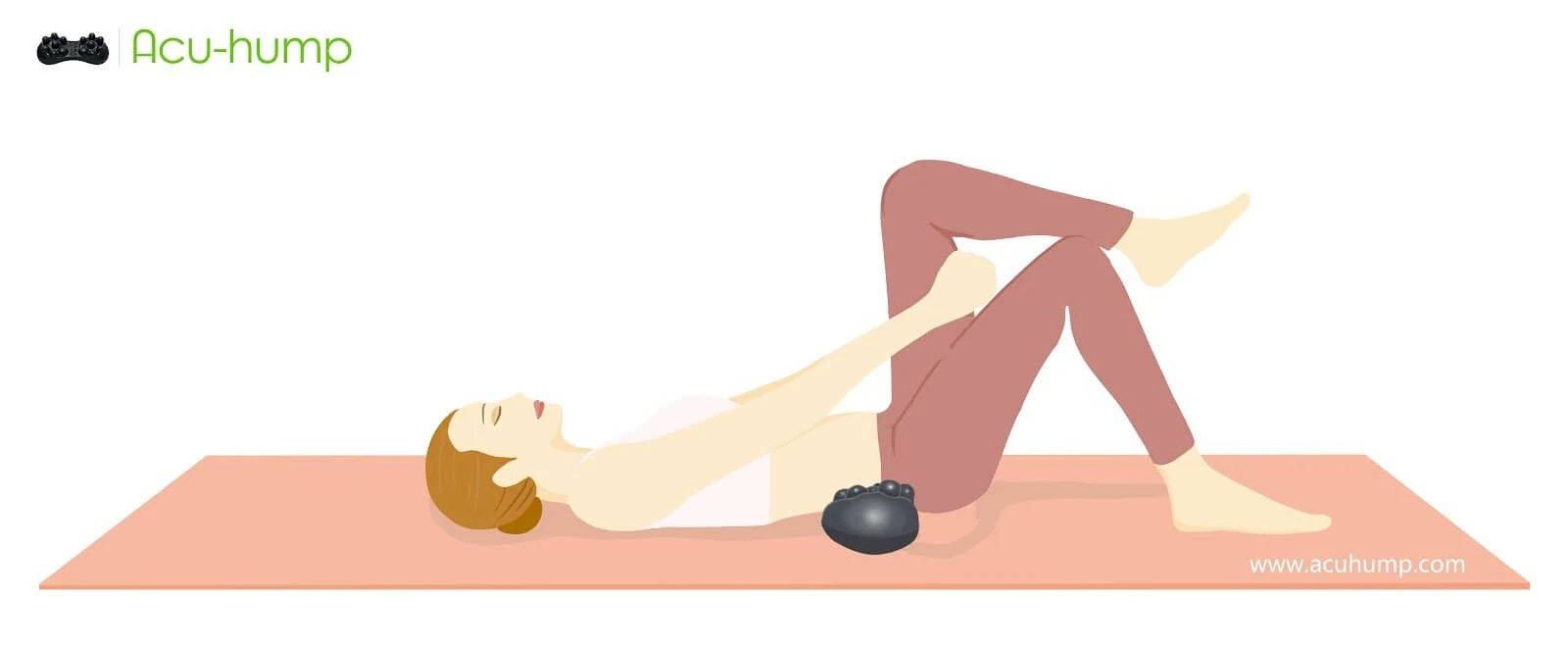
Bend your right knee and place your foot back on the ground, then switch to the opposite side. Repeat the same movements on the other side. After completing both sides, lengthen both legs together while keeping them slightly separated but still parallel. Gently place your hands on top of your thighs and apply gentle pressure, being careful not to hyperextend your lower back.
Take deep breaths and hold this position for several breaths, or for a few minutes if you are comfortable doing so.
Acu-hump® Relieve Piriformis Pain
5# Step: Figure 4 Piriformis Stretch
The Figure 4 stretch is a highly effective exercise for stretching and relieving tension in the piriformis muscle. To perform this stretch, follow these steps:
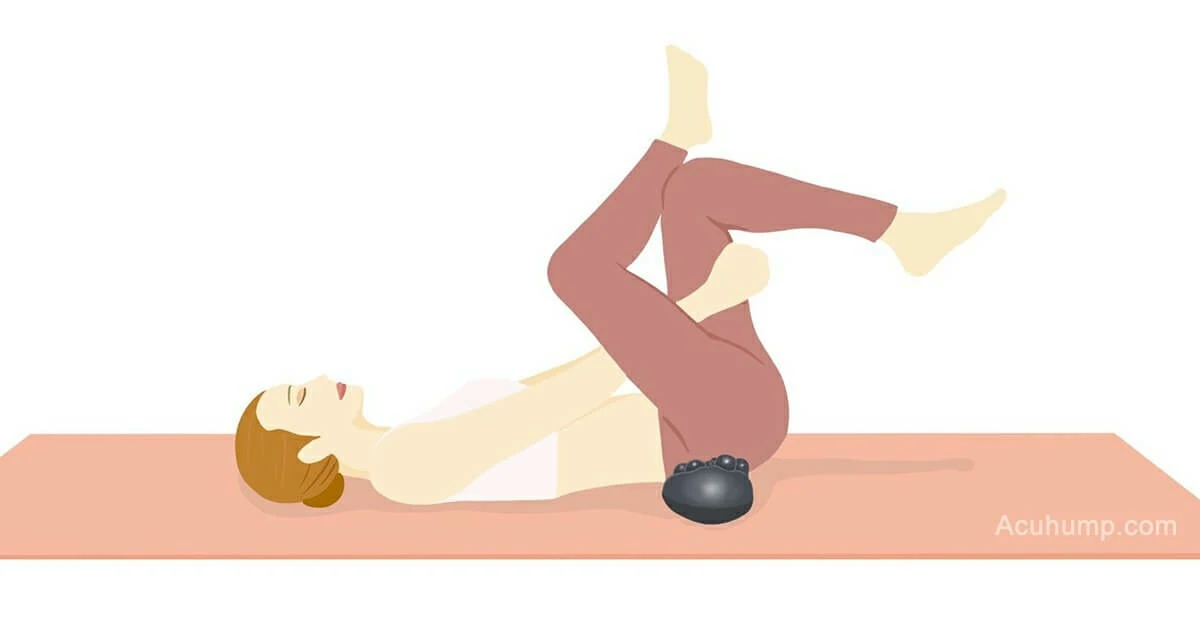
Lie on your back with knees bent and feet flat on the floor.
Cross the affected leg over the opposite knee, forming a figure 4 shape.
Gently pull the uncrossed leg towards your chest until you feel a stretch in the buttocks.
Hold the stretch for 30 seconds, then repeat on the other side.
This stretch targets the piriformis muscle, as well as the gluteus maximus, medius, and minimus muscles. Those with limited flexibility can modify the stretch by using a towel or strap to assist in pulling the leg towards the chest.
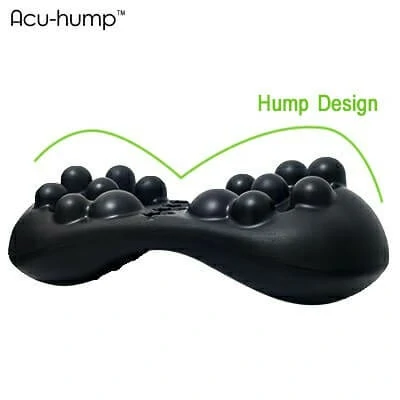
Acu-hump: 30-day return policy.
You have no risk.
6# Step: Stretch Hamstrings for Sciatica Relief
Regular leg root stretching exercises are essential for relieving pressure and tension in the piriformis muscle, which can cause discomfort in the legs and affect the sciatic nerve. By incorporating these exercises into your daily routine, you can effectively reduce pressure on the sciatic nerve and improve mobility and comfort.
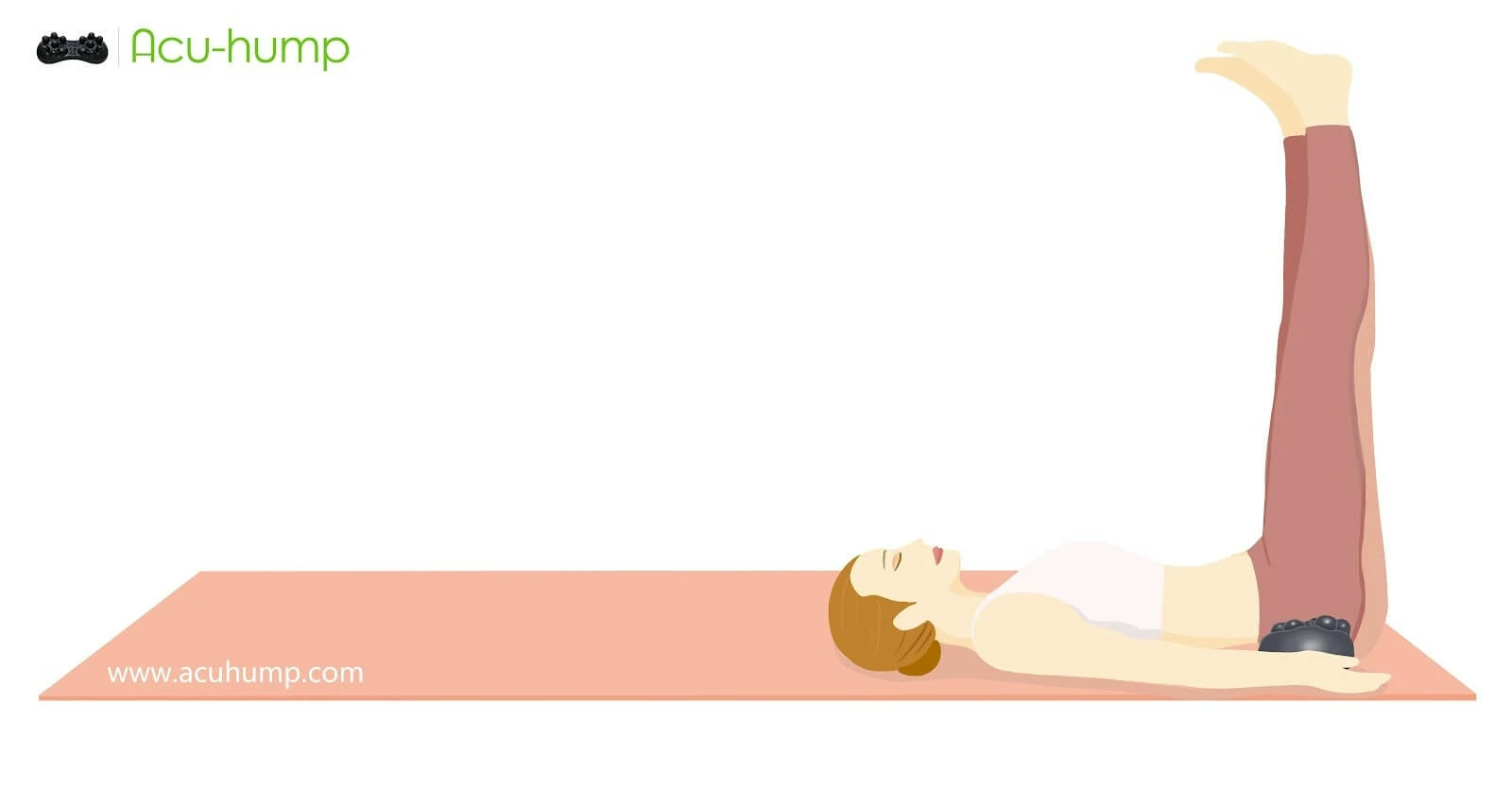
Including these stretching exercises in your daily routine can help prevent or alleviate symptoms of piriformis syndrome or sciatica. This can lead to increased flexibility and reduced discomfort in your lower back and legs. Remember to take deep breaths and listen to your body, stopping immediately if you experience any pain or discomfort during the stretch.
With consistent practice, you can minimize the risk of developing or continuing to experience sciatic nerve pain symptoms. Make leg root stretching exercises a regular part of your routine to promote greater comfort and mobility in your lower back and legs.
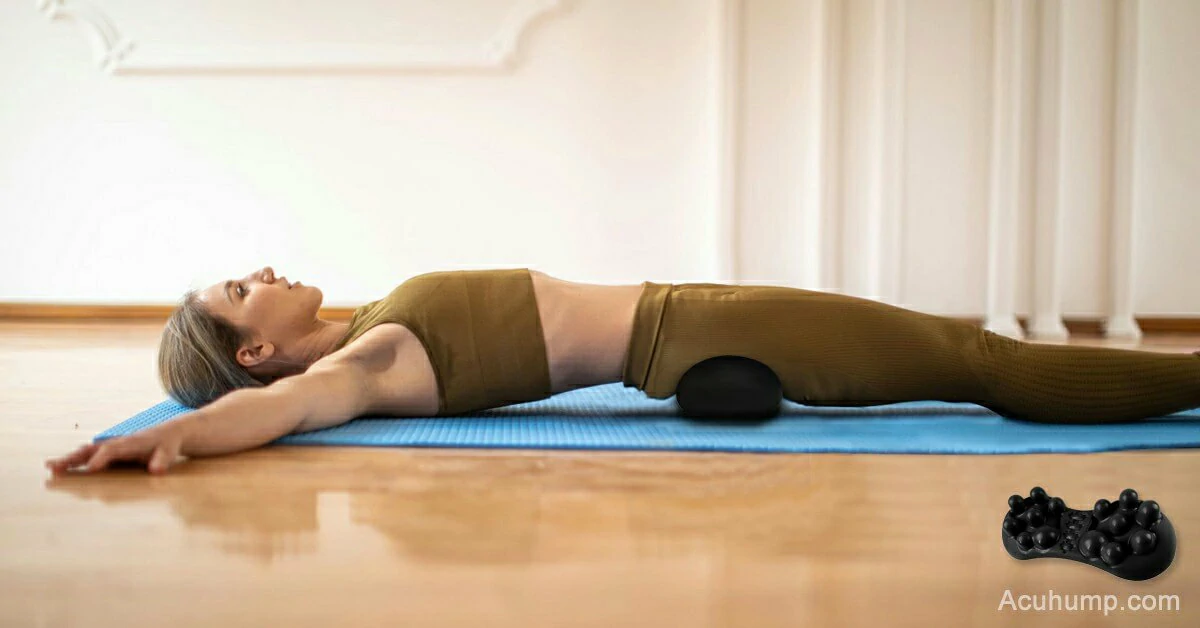
Acu-hump®
Release Butt & Lower Back
Other Immediate Relief Methods
Heat and Cold Therapy
Applying heat or cold packs to the affected area can provide immediate pain relief and reduce inflammation. For acute flare-ups, applying cold packs for 15-20 minutes several times a day can help decrease swelling. On the other hand, heat therapy, such as using a heating pad or taking a warm bath, can help relax the muscles and improve blood flow. It is important to follow recommended guidelines for safe application and duration of each therapy. Consult with a healthcare professional to determine which option is most suitable for your condition.
Over-the-counter Pain Medications
Over-the-counter medications, such as non-steroidal anti-inflammatory drugs (NSAIDs), can be taken for short-term pain relief. However, it is essential to follow the recommended dosage and precautions provided by the manufacturer. Consulting with a healthcare professional regarding the appropriate medication and dosage is advisable, especially for individuals with existing health conditions or taking other medications.

Acu-hump: 30-day return policy.
You have no risk.
Immediate relief techniques, including self-massage, stretching, strengthen exercises, heat/icetherapy, and over-the-counter pain medications, can provide much-needed comfort and alleviate symptoms associated with piriformis syndrome. Incorporating these techniques into a regular self-care routine can contribute to long-term pain management and improved mobility. However, it is essential to seek professional help when necessary to ensure a proper diagnosis and appropriate treatment for comprehensive management of the condition.
Acu-hump: 30-day return policy. No risk for you.

